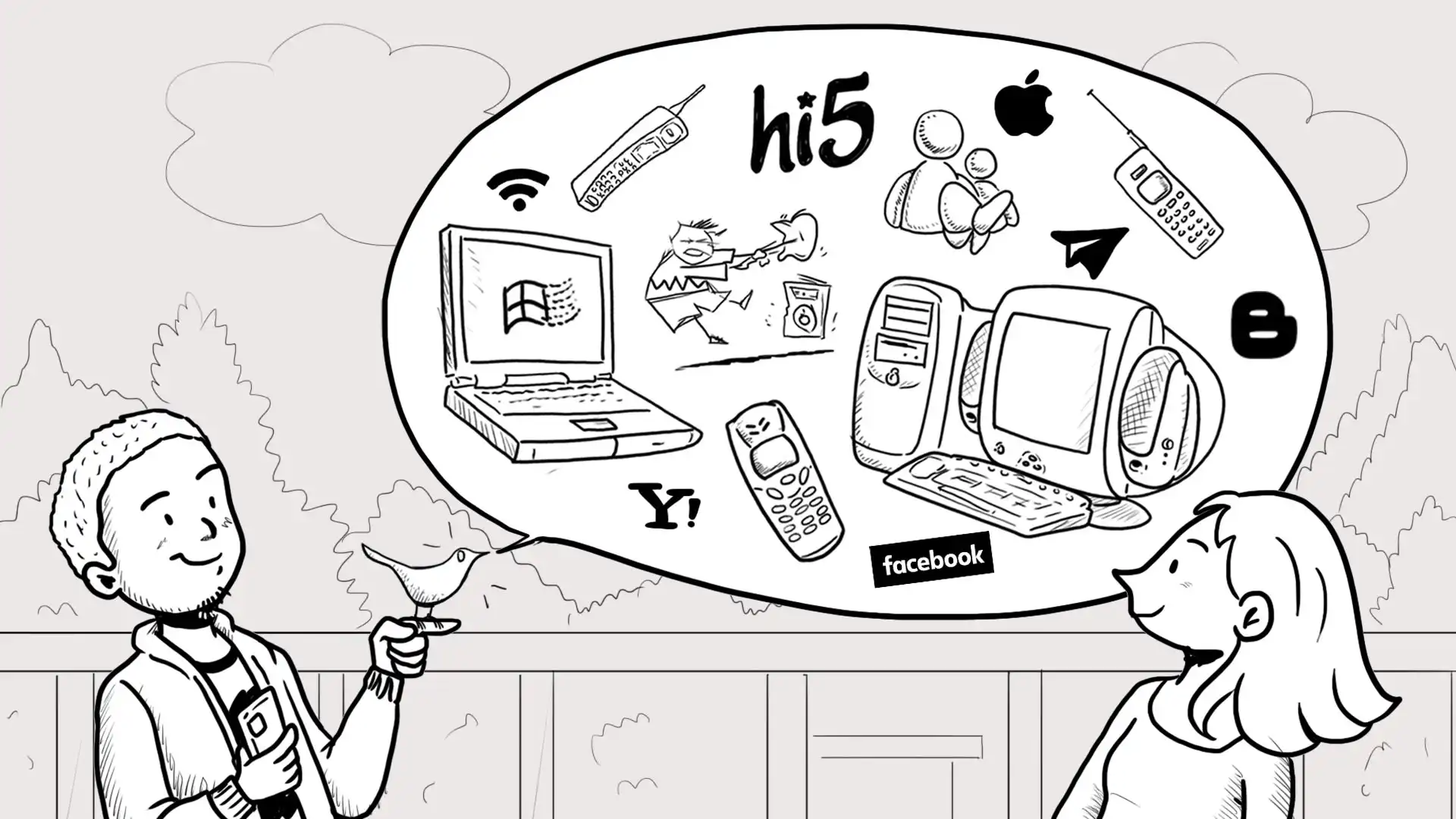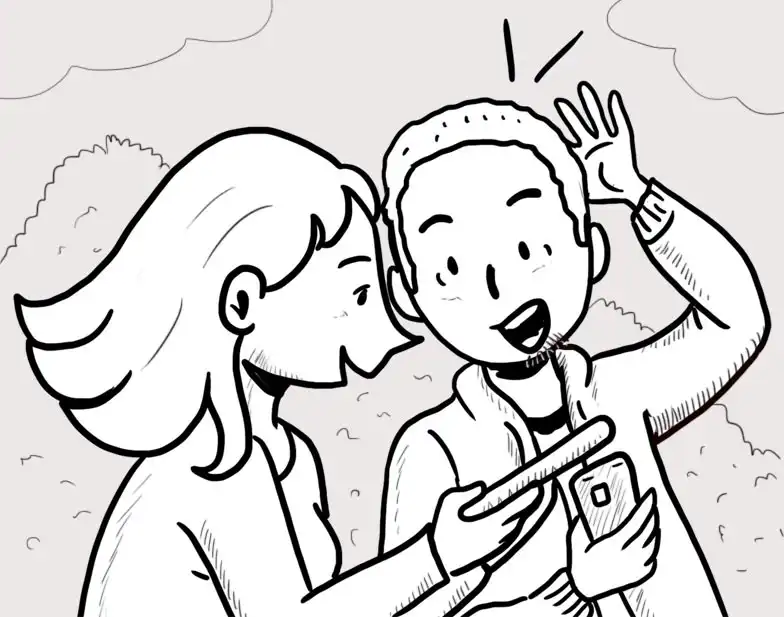Fernando: Hey Luisa, what are you doing?
Luisa: Hi, Fer! I'm preparing my final project for school.
Fernando: Really? What is it about?
Luisa: I want to show the different ways people used to communicate 20 years ago and the ones we use now.
Fernando: Wow! Tell me more!
Luisa: Did you know that people didn't use cell phones as we do these days? It was very expensive to buy one.
Fernando: Come on! Who can live without a cell phone?
Luisa: My father says that families had phones at home and that there weren't any social networks. The Internet started to be popular, but it was expensive too. Listen, this is part of my research: “By 1996 email was becoming a “thing”, and many people got their first email account, whether it was Yahoo or AOL. 1996 was also the year people started using instant messaging via our computers; instant real time chats and communications at the click of a button.”
Fernando: I can't believe it! No Facebook, no Tiktok, no Instagram?
Luisa: And there is more... “While the internet started attracting attention in the early nineties, it was only in about 1998 that it went mainstream. This was when we started enjoying access to a world of information, even if it took 20 minutes for our dial-up connection to log on, and another 20 minutes to download a text document.”
Fernando: 20 minutes! Pfff! Today, we have cell phones, pagers, wireless mobile devices, and personal computers or laptops — all with access to the Internet. Today, we communicate via email, instant messaging, and online chat rooms. I got my first cell phone at the age of 10.
Luisa: Me too! Nowadays we communicate in ways that were not even imaginable 30 years ago, and now I can’t imagine how our parents or grandparents ever lived without these technologies.
Fernando: That's really interesting, Luisa!
Luisa: And that's just the beginning. As the internet was growing in stature and usability in the late nineties, cell phones were starting to become universal in most of our lives, making communications easier and changing our social lives forever.
Fernando: It's amazing all that we have now! Yesterday I read about social media and guess what? Some of the first social media sites were Hi5 and Myspace before Mark Zuckerberg launched Facebook in 2004 and changed social communications for everyone.




